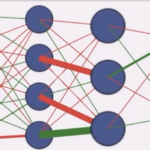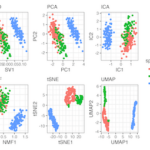In the digital era, the term “Machine Learning” is becoming as common as smartphones and social media. But what does it really mean? Let’s break it down together.
At its core, Machine Learning is a blend of traditional mathematical and statistical methods, supercharged with computational power, to tackle complex real-world problems. The key player in all of this? Data.
Now, you might be thinking, “Mathematical and statistical methods? Isn’t that stuff from my high school textbooks?” You’re absolutely right! We’re talking about concepts that have been around for centuries – derivatives, integrations, regressions, various predefined functions, matrices, vectors, deviations, means, distributions, series, and even simple arithmetic operations.
“But how does all this math fit into Machine Learning?” you might ask. Great question! We use these methods to solve engineering problems, but not manually or with a scientific calculator. Instead, we implement these methods using computer programming languages. Why? Because programming languages allow us to use variables, which can automate and simplify repetitive mathematical operations.
So, in a nutshell, Machine Learning is about applying mathematical and statistical operations using a high-level programming language. This allows us to take advantage of variables, making our operations more automated and easier.
“But isn’t that just programming?” you might wonder. While they are closely related, there’s a key difference. Traditional programming is a static process. It does exactly what it’s coded to do, regardless of what’s happening in real-time.
Let’s imagine a scenario: an e-commerce platform gets shared by a celebrity or featured on a popular TV channel, leading to an unusual surge in traffic from a diverse demographic. The rules coded based on last year’s sales statistics might not be effective in this new situation.
This is where Machine Learning shines. Unlike static programming, Machine Learning is dynamic. It adapts to the nature of the problem at hand. In our example, if the influx of customers is from a particular region, the algorithm can adjust itself to analyze the behavior of these new customers, their interests, and their interactions with the platform.
Being dynamic and adapting to the problem is all about iteration. This ability to iterate smartly is what sets Machine Learning apart from traditional programming. It’s the cornerstone of all Machine Learning algorithms, and it’s why we need powerful computational resources and cloud platforms in the field of Machine Learning.
Machine Learning is not just a buzzword; it’s a dynamic solution for dynamic problems. As we continue to see advancements in this field, we can expect Machine Learning to play an increasingly important role in our digital future.
Machine Learning is not just a buzzword; it’s a dynamic solution for dynamic problems. It’s also the beating heart of Artificial Intelligence (AI). Without Machine Learning, AI as we know it wouldn’t exist. Machine Learning algorithms allow AI systems to learn from data, improve over time, and make decisions or predictions based on input.
One of the most exciting developments in AI is the rise of generative AI. This is a type of Machine Learning that uses algorithms to generate new data that’s similar to the input data it’s been trained on. Generative AI can create anything from a piece of music, to a work of art, to a block of text that sounds like it was written by a human. It’s even being used to create realistic virtual worlds and characters for video games.
Generative AI is a testament to the power and potential of Machine Learning. It’s a technology that’s still in its early stages, but it’s already making waves in the tech world and beyond. As it continues to evolve and improve, who knows what amazing things it will be able to create?
So, as we delve deeper into the digital age, Machine Learning is set to play an increasingly important role. It’s a field that’s constantly evolving, constantly pushing the boundaries of what’s possible. And it’s a field that’s open to everyone. Whether you’re a seasoned data scientist, a curious student, or just someone who’s interested in technology, there’s never been a better time to dive into Machine Learning.







4 responses to “Machine Learning: A Dynamic Solution for Dynamic Problems”
Dear Website Owner,
I hope this email finds you well. I recently discovered your website and was impressed by the quality of your content and the helpful information you offer to your audience. In light of this, I would like to propose a backlink exchange that could benefit both our websites.
Thank you for considering my offer. I am excited about the potential growth this partnership may bring to our websites and am eager to discuss the details further. Please do not hesitate to reach out to me at your convenience.
Best regards,
David E. Smith
Hey there! I understand this is somewhat off-topic but I had to ask.
Does running a well-established blog like yours take a lot of work?
I’m brand new to blogging but I do write in my journal every day.
I’d like to start a blog so I can share my experience and thoughts
online. Please let me know if you have any recommendations or tips
for brand new aspiring blog owners. Appreciate it!
Ahaa, its fastidious dialogue on the topic of this piece of writing here
at this website, I have read all that, so at this time me also commenting
here.
Hi there, all is going perfectly here and ofcourse every
one is sharing information, that’s genuinely excellent, keep up writing.